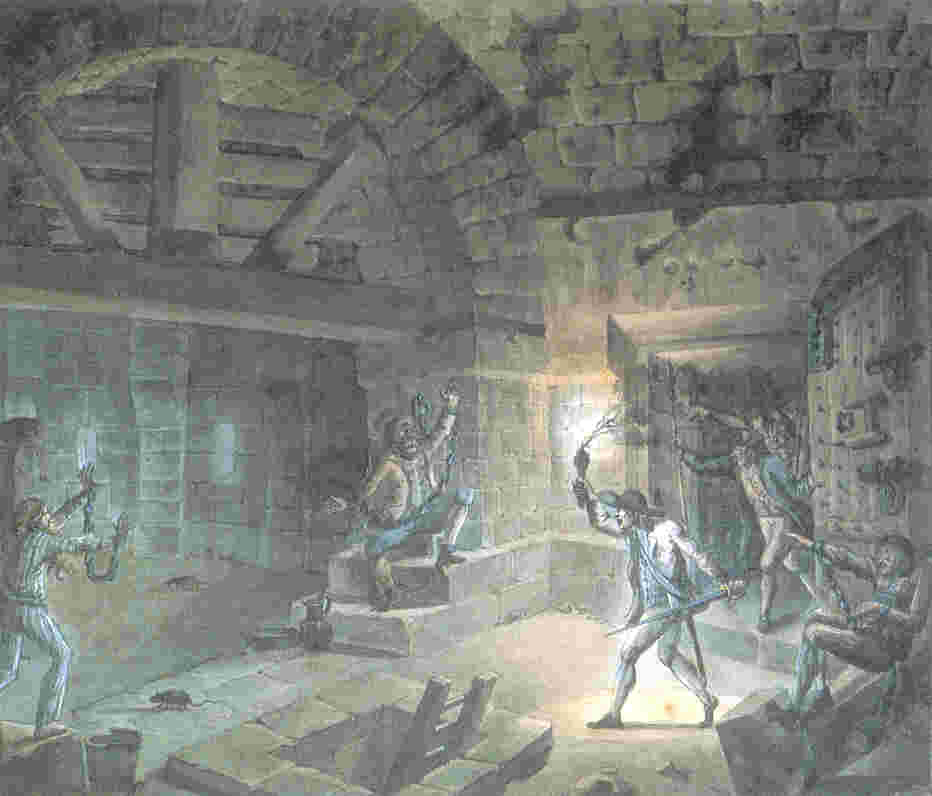Parisians absolutely hated
the Bastille. It was a feared place, a prison, surrounded by myths
of dying prisoners, innocent people chained to the walls, torture
chambers and stinking dungeons, of people being sent there by sealed
letters, (lettres de cachet) directly from the King.
On the 14th of July, a
crowd broke into the Bastille. They were angry. The fortress was a symbol
of everything they hated about the monarchy. The smashed inside, killing
and breaking anything in their way.
The Storming of the
Bastille was one of the most important events in French history. It was a
symbol of the victorious French peasants over the monarchy and everything
to do with it. But did it really happen like so many paintings suggest?
...
|
|
Glossary

|
|
|
The table shows there is difference in opinion
about what really happened. According to this account, written by Jacques
Godechot, a leading French historian, the Storming of the Bastille did not
happen as the peasants remembered...
| |
|
|
| |

|
|
| |
A Cell in the
Bastille painted by Jean-Pierre Houël in 1789 |
|
"The attackers were surprised to find
so few captives. Many believed there were others, hidden in some secret cavern
or dungeon...On 18th July, the four gaolers were questioned separately. They
confirmed that the Bastille contained, on 14th July, only 7 prisoners: Solages,
Whyte, Tavernier, Béchade, La Corrège, Pujade and Larroche. The latter four,
common prisoners accused of forgery, disappeared soon after and were never seen
again. The Count of Solages had been imprisoned at the request of his
family...Whyte was an Englishman, afflicted by madness, and on the 15th July he
was imprisoned in Chareton. Tavernier was equally mad and he too was sent to
Chareton. "
Jacques Godechot, La
Prise de La Bastille, (The (Taking) Storming of the Bastille,1965)
Louis
XVI considered sending his army to recapture the Bastille. But his war minister
advised him that the army would probably refuse to do so, and hearing this,
Louis was forced to give up control of Paris. He allowed the people to set up
their own military force, called the National Guard, to keep order in Paris. The
Paris Commune, a new local government was subsequently set up by leading third
estate officials.
Towns
and Cities all over France followed Paris' example and rioted. Crowds attacked
town halls, and, having forced out royal officials, started up their own
Communes and National Guard units.
 Back
to Main Events Back
to Main Events

|